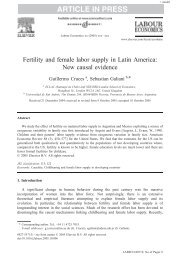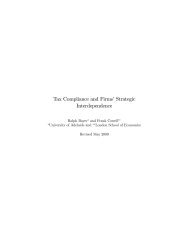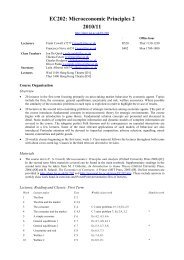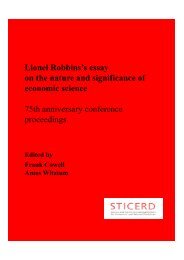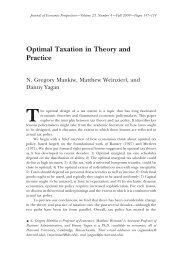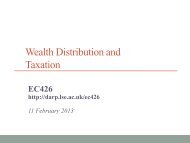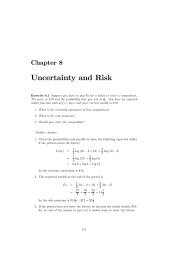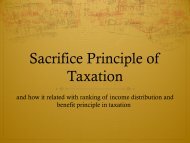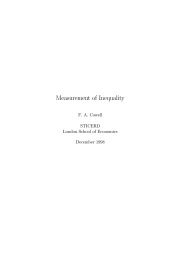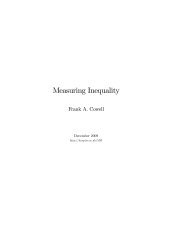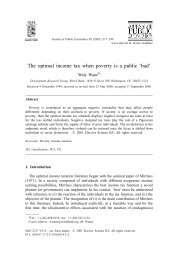Create successful ePaper yourself
Turn your PDF publications into a flip-book with our unique Google optimized e-Paper software.
1.2. INEQUALITY OF WHAT? 5it includes in a comprehensive fashion the entire set of economic opportunitiesenjoyed by a person. The drawbacks, however, are manifest. Since lifetimesummation of actual income receipts can only be performed once the incomerecipient is deceased (which limits its operational usefulness), such a summationmust be carried out on anticipated future incomes. Following this course we areled into the di¢ culty of forecasting these income prospects and of placing onthem a valuation that appropriately allows for their uncertainty. Although Ido not wish to assert that the complex theoretical problems associated withsuch lifetime aggregates are insuperable, it is expedient to turn, with an eye onChapter 5 and practical matters, to income itself.Income –de…ned as the increase in a person’s command over resources duringa given time period –may seem restricted in comparison with the all-embracingnature of wealth or lifetime income. It has the obvious disadvantages thatit relates only to an arbitrary time unit (such as one year) and thus that itexcludes the e¤ect of past accumulations except in so far as these are deployedin income-yielding assets. However, there are two principal o¤setting merits: if income includes unearned income, capital gains and “income in kind”as well as earnings, then it can be claimed as a fairly comprehensive indexof a person’s well-being at a given moment; information on personal income is generally more widely available andmore readily interpretable than for wealth or lifetime income.Furthermore, note that none of the three concepts that have been discussedcompletely covers the command over resources for all goods and services insociety. Measures of personal wealth or income exclude “social wage”elementssuch as the bene…ts received from communally enjoyed items like municipalparks, public libraries, the police, and ballistic missile systems, the interpersonaldistribution of which services may only be conjectured.In view of the di¢ culty inherent in …nding a global index of “well-o¤ness”,we may prefer to consider the narrow de…nition of the thing called “income.”Depending on the problem in hand, it can make sense to look at inequality in theendowment of some other personal attribute such as consumption of a particulargood, life expectancy, land ownership, etc. This may be applied also to publiclyowned assets or publicly consumed commodities if we direct attention not tointerpersonal distribution but to intercommunity distribution – for example,the inequality in the distribution of per capita energy consumption in di¤erentcountries. The problems concerning “income” that I now discuss apply withequal force to the wider interpretation considered in the earlier paragraphs.It is evident from the foregoing that two key characteristics of the “income”index are that it be measurable and that it be comparable among di¤erent persons.That these two characteristics are mutually independent can be demonstratedby two contrived examples. Firstly, to show that an index might bemeasurable but not comparable, take the case where well-being is measured byconsumption per head within families, the family rather than the individual beingtaken as the basic social unit. Suppose that consumption by each family in



